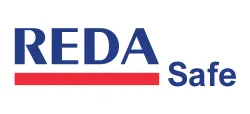Introduction
Signs displaying "X Days Without an Accident" are a common sight in many workplaces, highlighting the importance of maintaining a safe environment. While opinions vary on the effectiveness of these signs, the intention behind celebrating periods without incidents is clear and positive. Accidents serve no benefit whatsoever; they are detrimental to the well-being of employees, create additional work for employers through paperwork and investigations, and burden teams with the challenge of compensating for lost productivity.
Avoiding accidents is a shared goal that has become increasingly attainable. The field of workplace safety has significantly advanced, evolving from basic intentions to prevent accidents to developing a deep understanding of effective prevention strategies. This progress is the result of decades of dedicated efforts from safety professionals, who have refined their knowledge and practices over time.
This article aims to outline key actions that employers can take to identify and mitigate hazards, reduce risks, and ensure the safety of their employees, allowing everyone to complete their shifts without injury.
12 Ways to Do Safety Right
At its core, the most effective method to avoid workplace incidents is to embed safety deeply within the organization's values. Cultivating a culture of safety that permeates every level of the organization can lead to substantial improvements.
However, these ideas can seem abstract and challenging to implement. The journey to a safer workplace begins with a comprehensive approach to safety measures. Demonstrating a commitment to safety is the first step, and from there, this commitment can influence the entire workplace culture positively.
Below are some of the top strategies to promote safety:
- Invest in Comprehensive Training: Offer extensive training programs that cover more than just the basics. Equip your employees with the knowledge and skills to work safely, emphasizing the importance of safety practices. This ensures everyone understands not only how to perform their tasks safely but also why these measures are crucial.
- Enhance Hazard Awareness: Use a combination of training sessions, safety signage, regular updates, and informal talks to keep employees informed about potential hazards. Awareness is the first step toward prevention, enabling workers to recognize and avoid risks in their daily tasks.
- Enforce a Stop-Work Authority: Establish a policy that empowers employees to halt work if they detect a safety concern. Make it clear that work should only resume once the issue is thoroughly addressed and resolved, promoting a safety-first mindset.
- Facilitate Easy Reporting of Safety Issues: Introduce mobile software and clear reporting protocols to simplify the reporting process. Ensure there are no negative repercussions for reporting safety concerns, encouraging a proactive approach to safety.
- Promote Open Reporting Culture: Assure employees that reporting safety issues is encouraged and will never result in punishment. Focus on resolving issues rather than assigning blame, fostering an environment where safety concerns are openly discussed and addressed.
- Accessibility of Safety Managers: Make sure safety managers are easily reachable for consultations or concerns. Their readiness to act on issues reinforces the importance of safety within the organization.
- Regular Safety Inspections: Conduct thorough inspections of equipment, work procedures, and site conditions frequently, aiming for at least daily checks. This proactive approach helps identify potential problems early, maintaining a constant emphasis on safety.
- Prompt Accident Investigation: React swiftly to accidents by investigating and addressing the root cause. Communicate the outcomes and actions taken to employees, demonstrating a commitment to continual safety improvements.
- Maintain Detailed Incident Records: Document all incidents, from minor to major, in an organized and accessible manner. This data is invaluable for identifying patterns and areas for improvement, contributing to future safety strategies.
- Conduct Toolbox Talks and Safety Moments: Between formal training sessions, engage in regular, informal safety discussions. These serve as constant reminders of safety practices and allow for the exchange of feedback and ideas, keeping safety at the forefront of everyone’s mind.
- Encourage Safety Mentorship: Leverage the experience of long-standing employees by pairing them with newer staff for safety mentorship. This not only enhances safety knowledge among newcomers but also builds a community of safety advocates within the team.
- Leadership in Safety Communication: Safety messages should resonate from all levels of management, not just the safety officers. When leadership consistently communicates the importance of safety, it reinforces its value across the organization, embedding it into the company culture.
Implementing these strategies requires commitment and consistency, but the payoff in creating a safer workplace for everyone is invaluable.
Employer's Role in Ensuring Workplace Safety
Safety is often perceived as the domain of employees, the ones navigating high-risk situations, handling heavy machinery, or interacting directly with customers. However, the true onus for ensuring a safe working environment falls squarely on the shoulders of employers.
Employers play a critical role in setting safety expectations within the workplace. If they view safety measures as an inconvenient obstacle to productivity, merely to avoid penalties, this attitude is likely to be mirrored by their employees.
The decision to allocate time, financial resources, and tools for safety initiatives begins with the employer. Employees are limited by the resources provided to them; without sufficient support, maintaining a safe work environment becomes a challenging task.
Legally, the Occupational Safety and Health (OSH) Act places a clear responsibility on employers to create a secure workplace. This includes:
- Keeping the workplace free from known dangers.
- Adhering to established safety standards and regulations.
- Ensuring the availability and maintenance of safe tools and equipment.
- Utilizing appropriate warning signage and safety color codes.
- Offering comprehensive safety training in a language understandable to the workforce.
- Conducting regular inspections to maintain compliance with safety standards.
While meeting these legal obligations is fundamental to maintaining a basic level of safety, truly minimizing workplace accidents requires employers to adopt a more hands-on, preventative strategy towards workplace safety.
Conclusion
The journey toward achieving a safer workplace is both a collective and an individual responsibility, with the lion's share of accountability resting with employers. By integrating the top 12 strategies for minimizing workplace accidents and enhancing safety, organizations can establish a robust safety culture that permeates every aspect of their operations. This culture not only meets the basic legal requirements but also goes above and beyond to ensure that every employee feels valued, protected, and equipped to tackle their roles without fear of accidents or harm. Through comprehensive training, improved hazard awareness, and a commitment to open communication and prompt action, employers can foster an environment where safety is not just a policy but a fundamental principle of the workplace ethos.
Such an approach yields significant outcomes, including a noticeable reduction in workplace accidents, enhanced employee morale, and a stronger reputation for the organization as a leader in workplace safety. It demonstrates a clear commitment to not just the well-being of the workforce but also to the overall success and sustainability of the business. By prioritizing safety from the top down, employers can create a ripple effect of positive change, transforming their workplaces into models of safety and care. This proactive stance on safety is not just about preventing accidents; it's about building a legacy of health, safety, and excellence that will benefit everyone involved, from the individual employee to the broader community.

